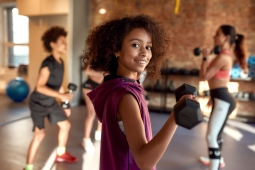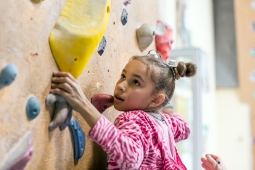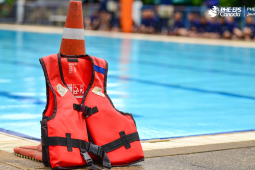[ Research ] Mandatory supervised RT was most effective in facilitating RT among students with the lowest participation and did not lead to equal participation between girls and boys with the highest participation minutes. Adding a minimal number of required RT hours to the high school PE curriculum may lead to additional RT participation in some students.
[ Feature Article ] As society increasingly turns to various forms of media to inform how they view themselves, their bodies, and the bodies around them, the importance of challenging these narratives within the educational environment becomes increasingly paramount. Physical and Health Education (PHE) classes are a perfect space to lead the way in supporting the wellness and well-being of youth when it comes to shifting the perceptions and perspectives around body image.
[ Feature Article ] At Larkhall Academy, motivating students to stay physically active is taken to new heights—literally. With the installation of a 40-foot rock climbing wall funded by financial grants, the school has transformed physical education into an engaging, multi-disciplinary experience. The potential for growth is endless. Imagine that.
[ Feature Article ] We want to know: what types of topics, trends, hot issues, concepts, or teaching strategies would you want to see covered in the PHE Journal and in our podcast?
[ Research ] The school environment is an ideal venue to teach water-safety skills and knowledge, although barriers to this content delivery exist. Two commonly cited barriers are a lack of teacher water safety knowledge and access to aquatic facilities. This paper offers water-safety background knowledge for teachers, and includes three dry-land activities and resource links for K-12 PHE classes.






